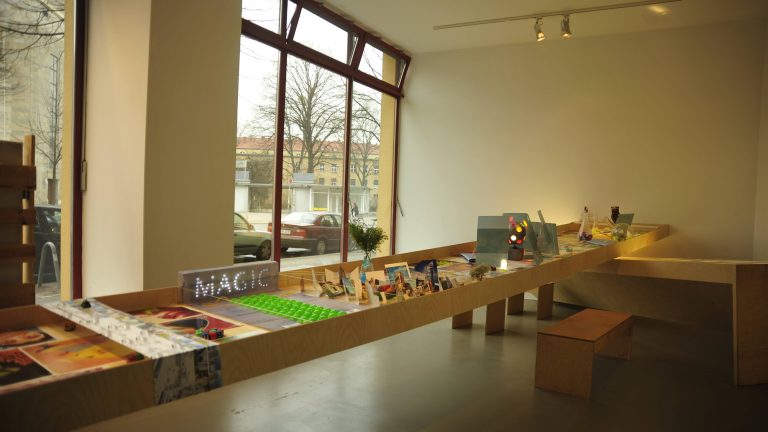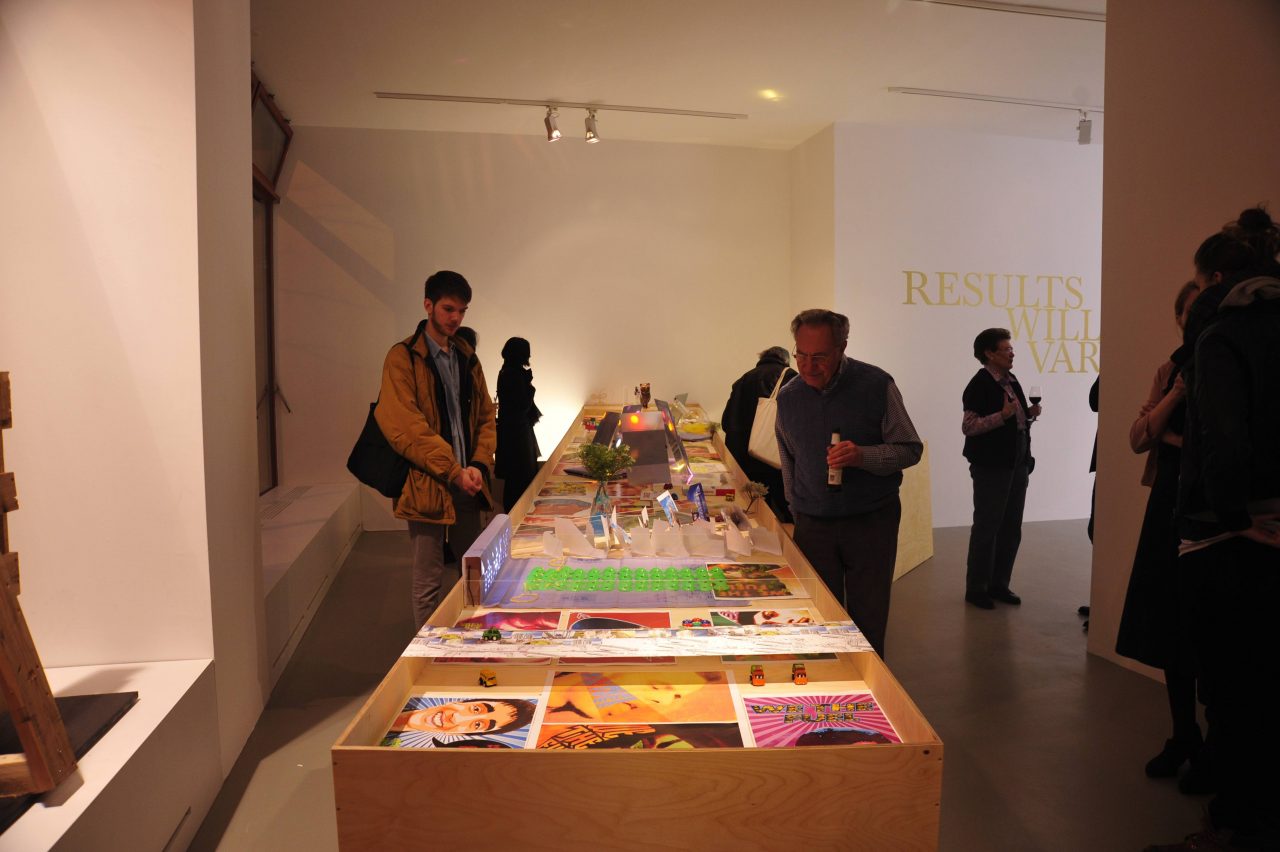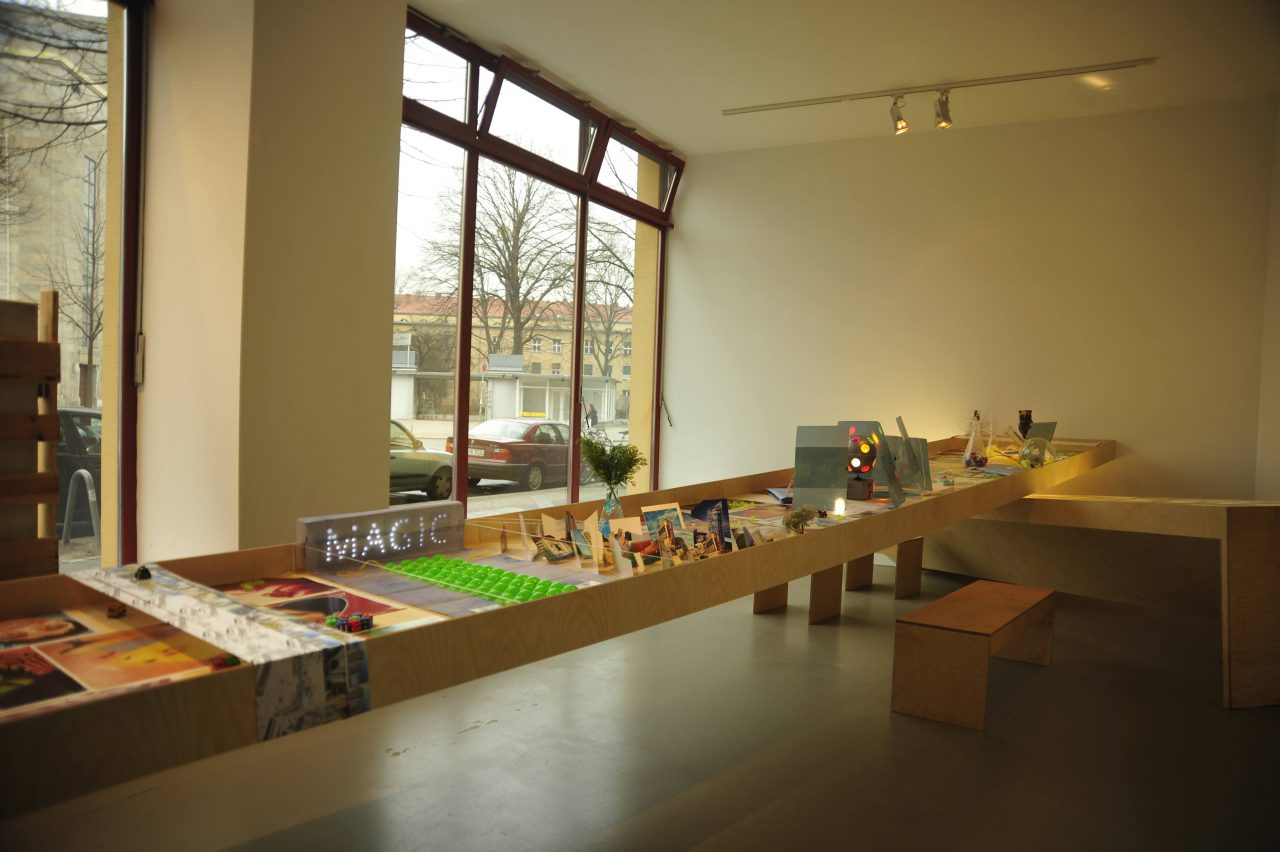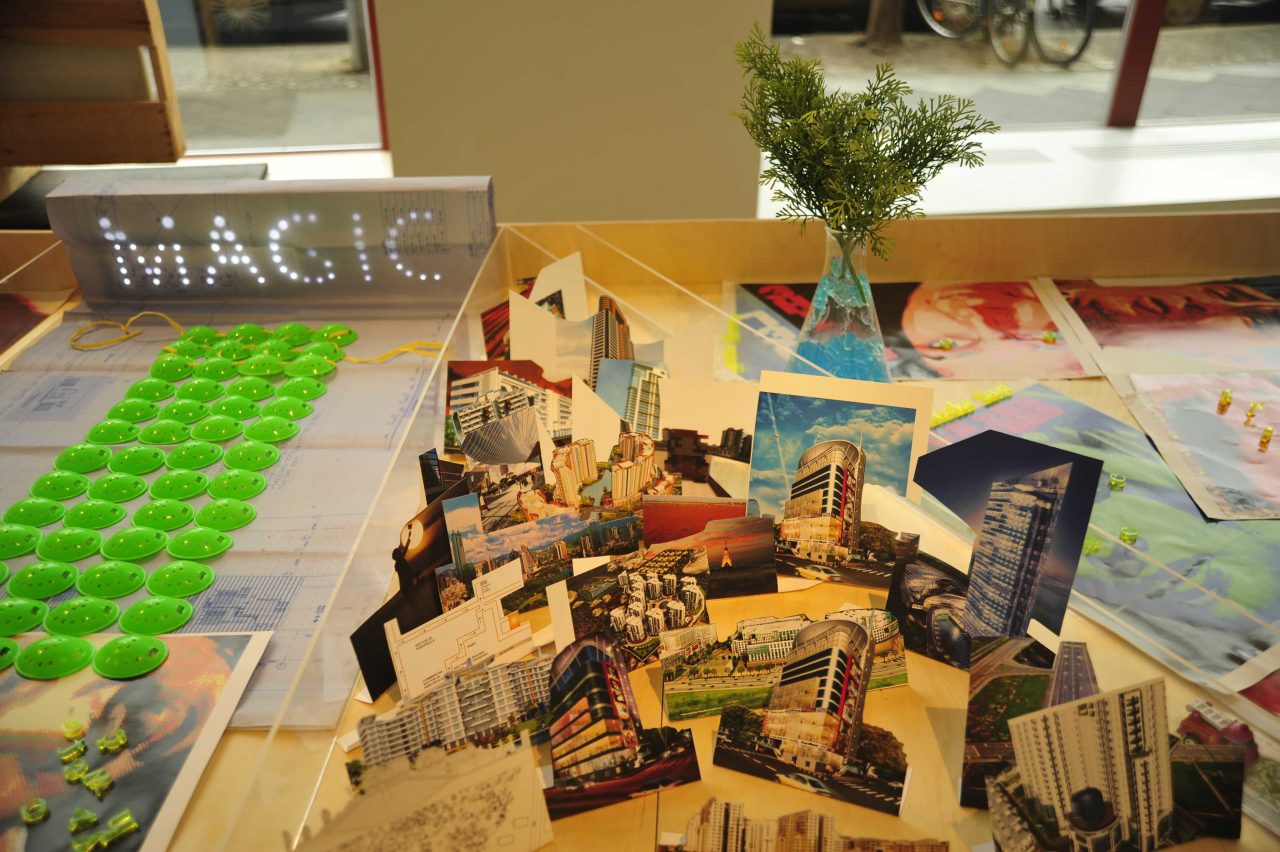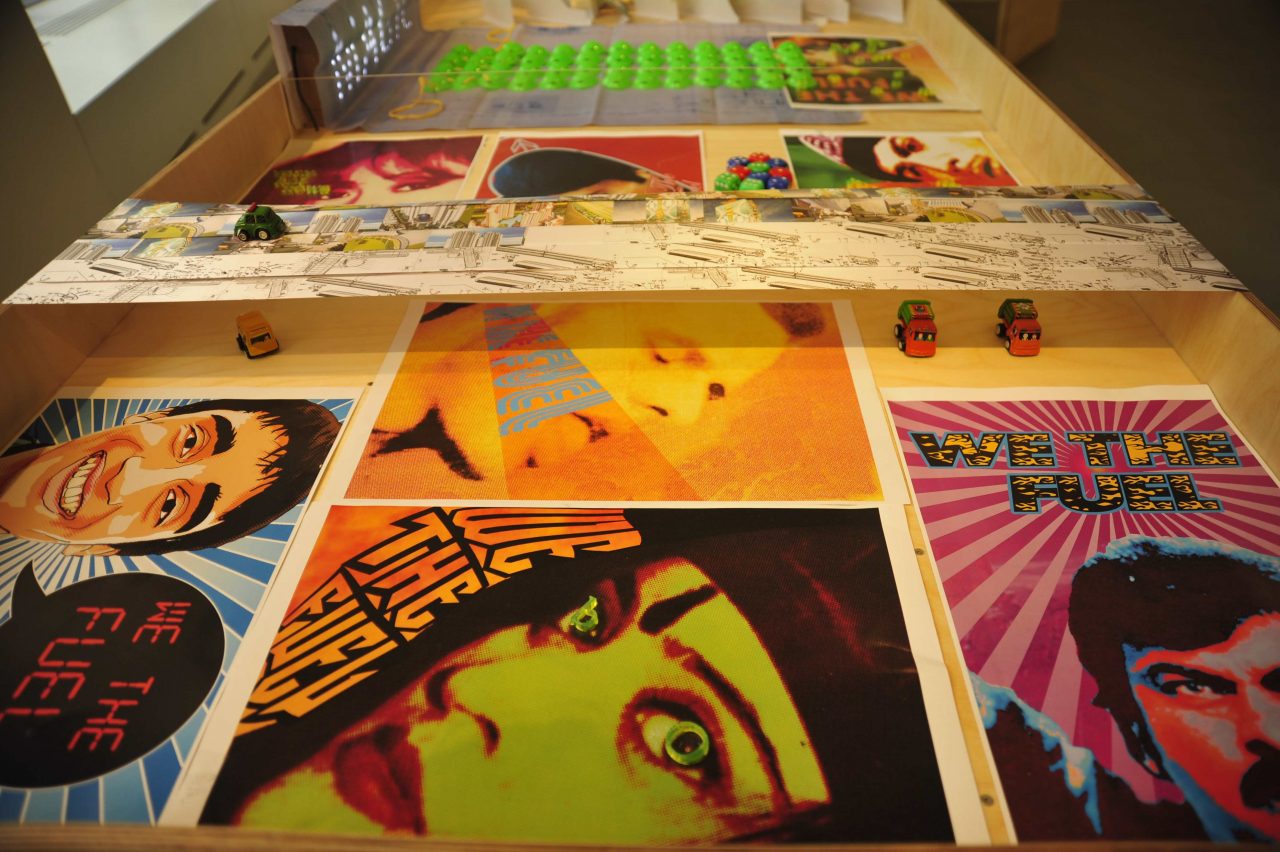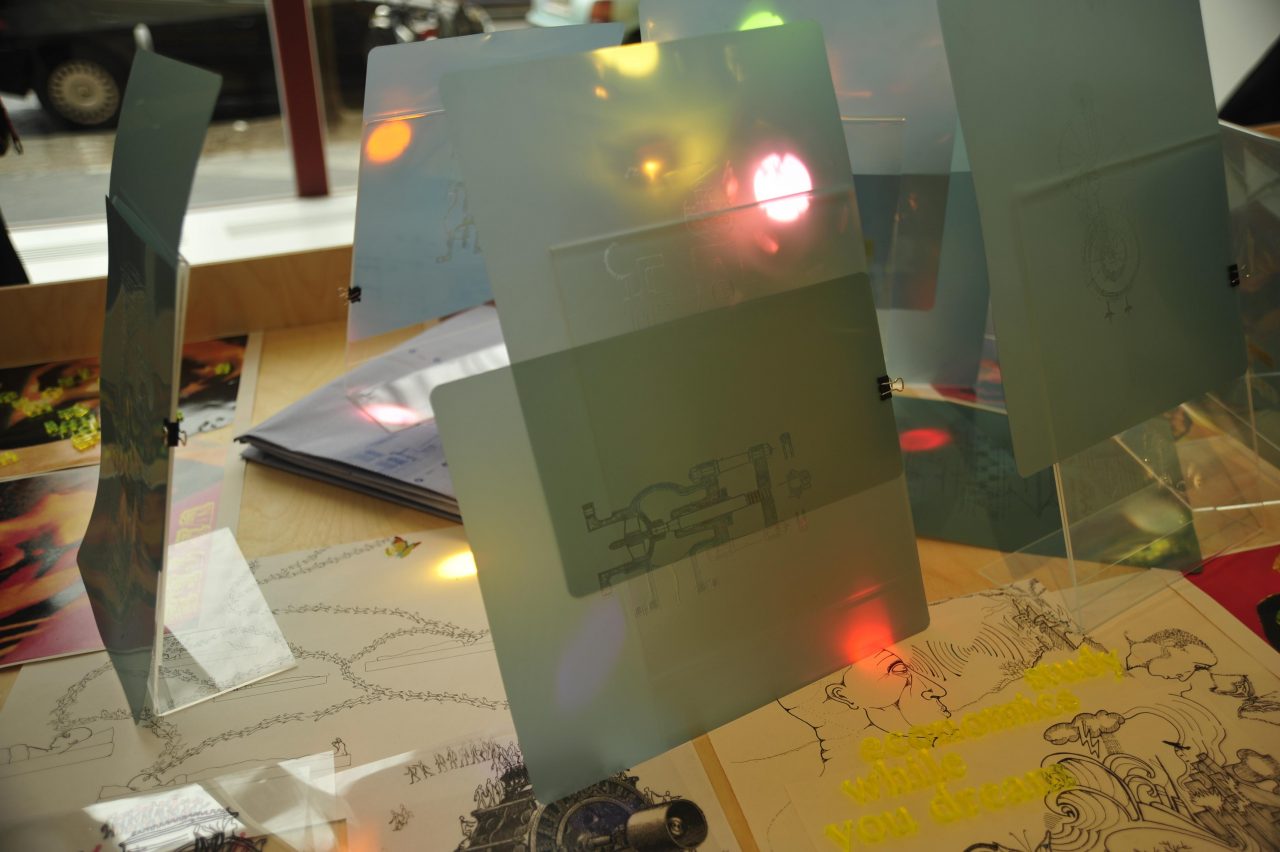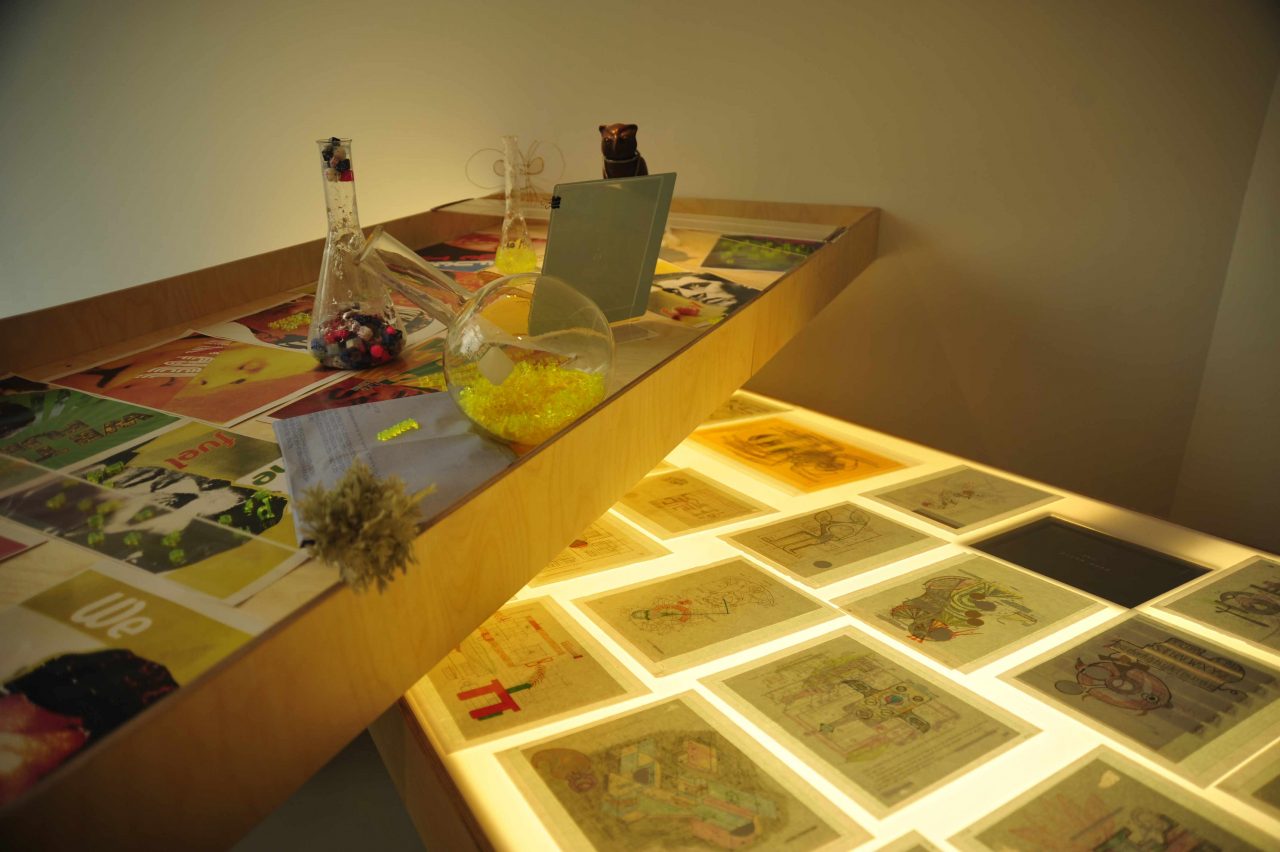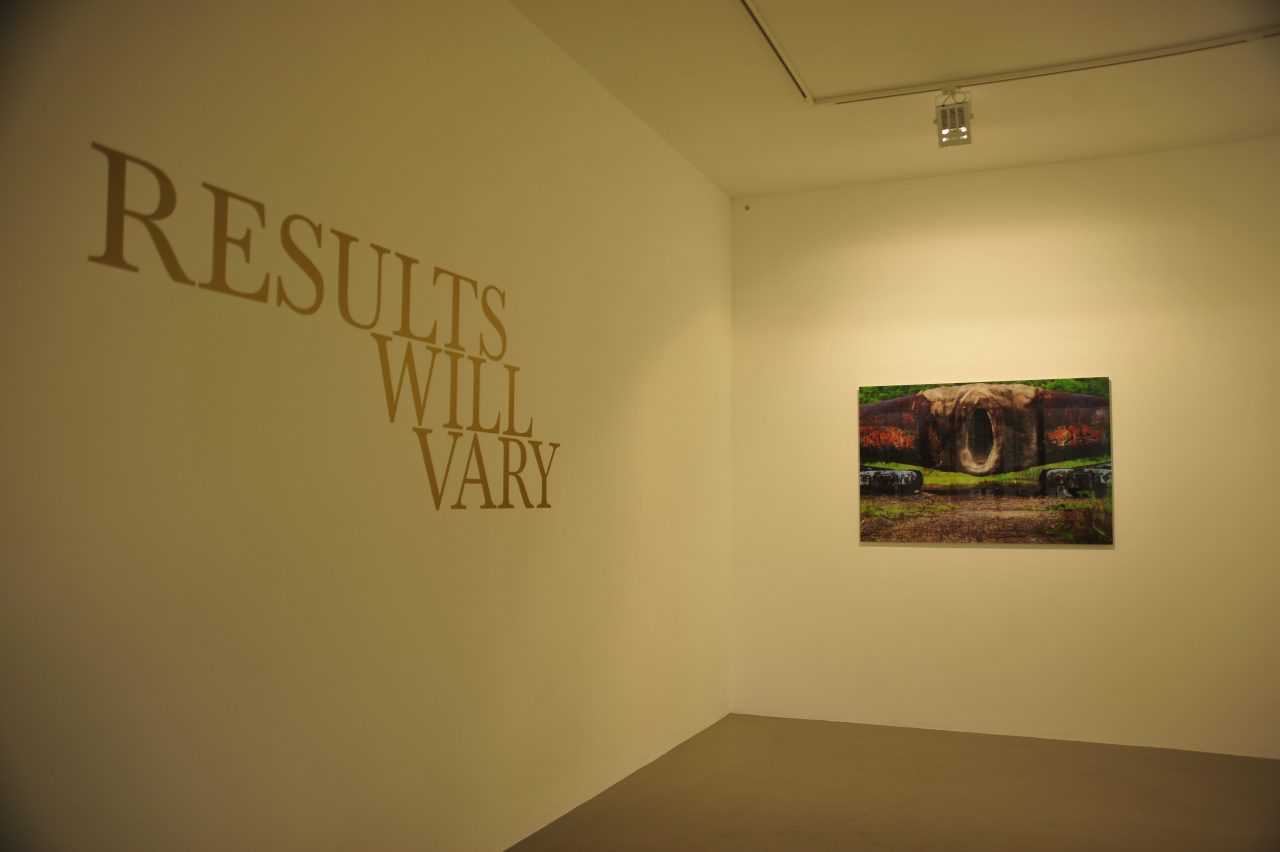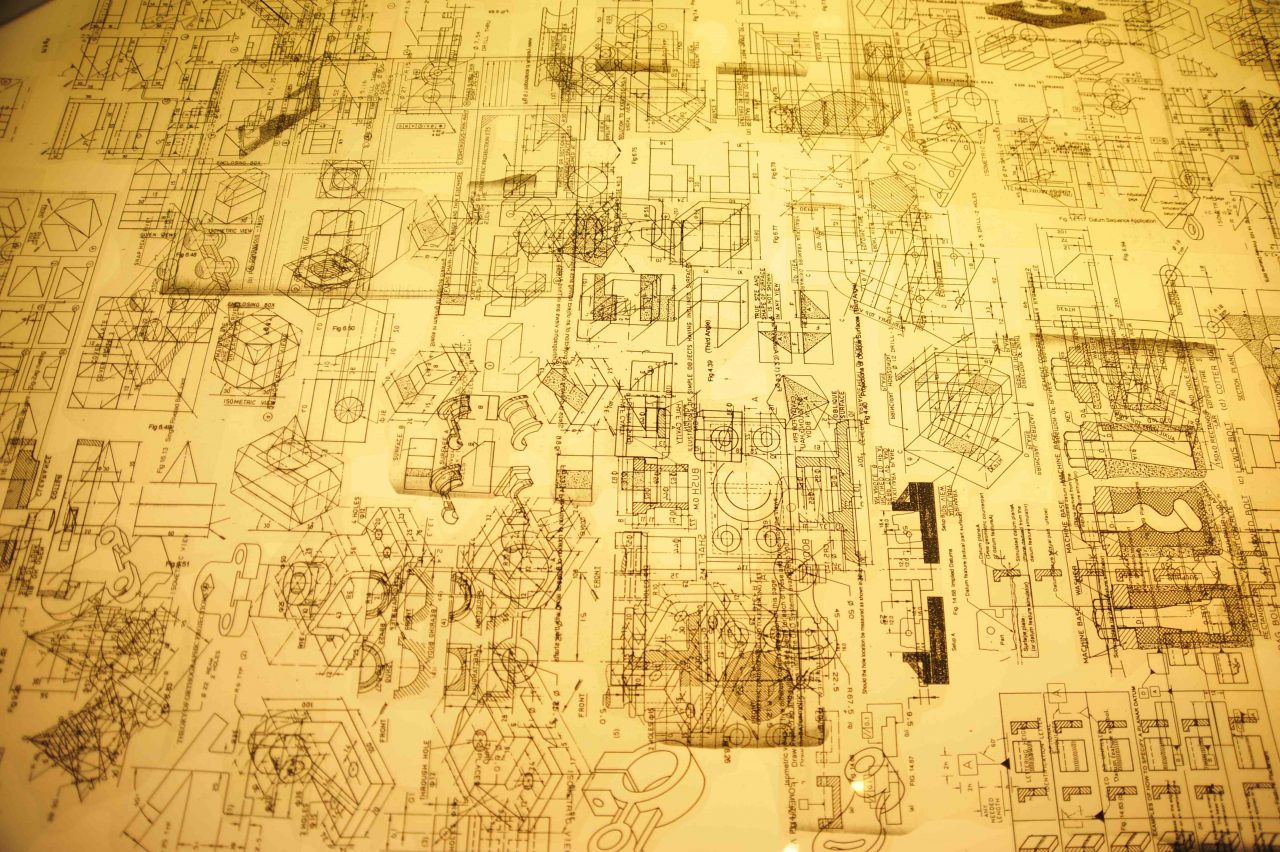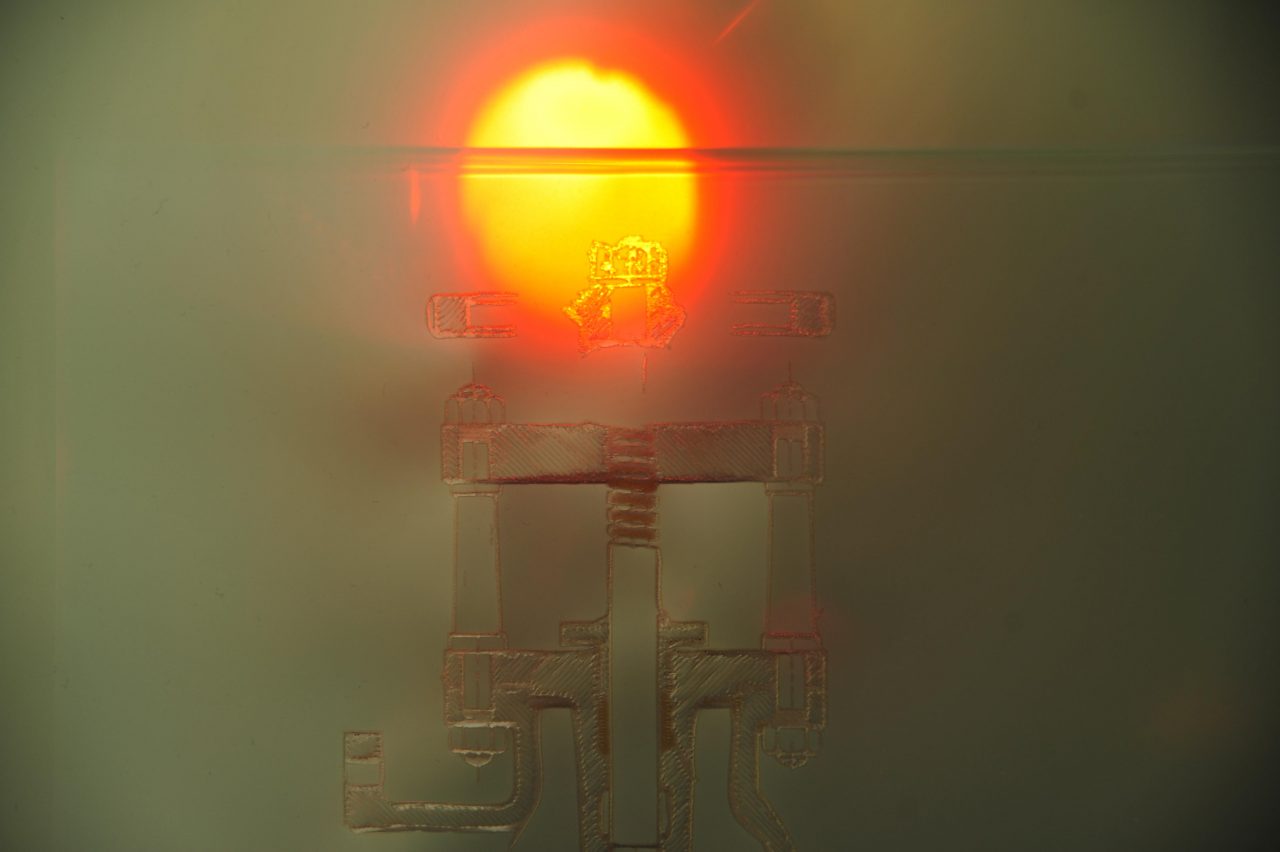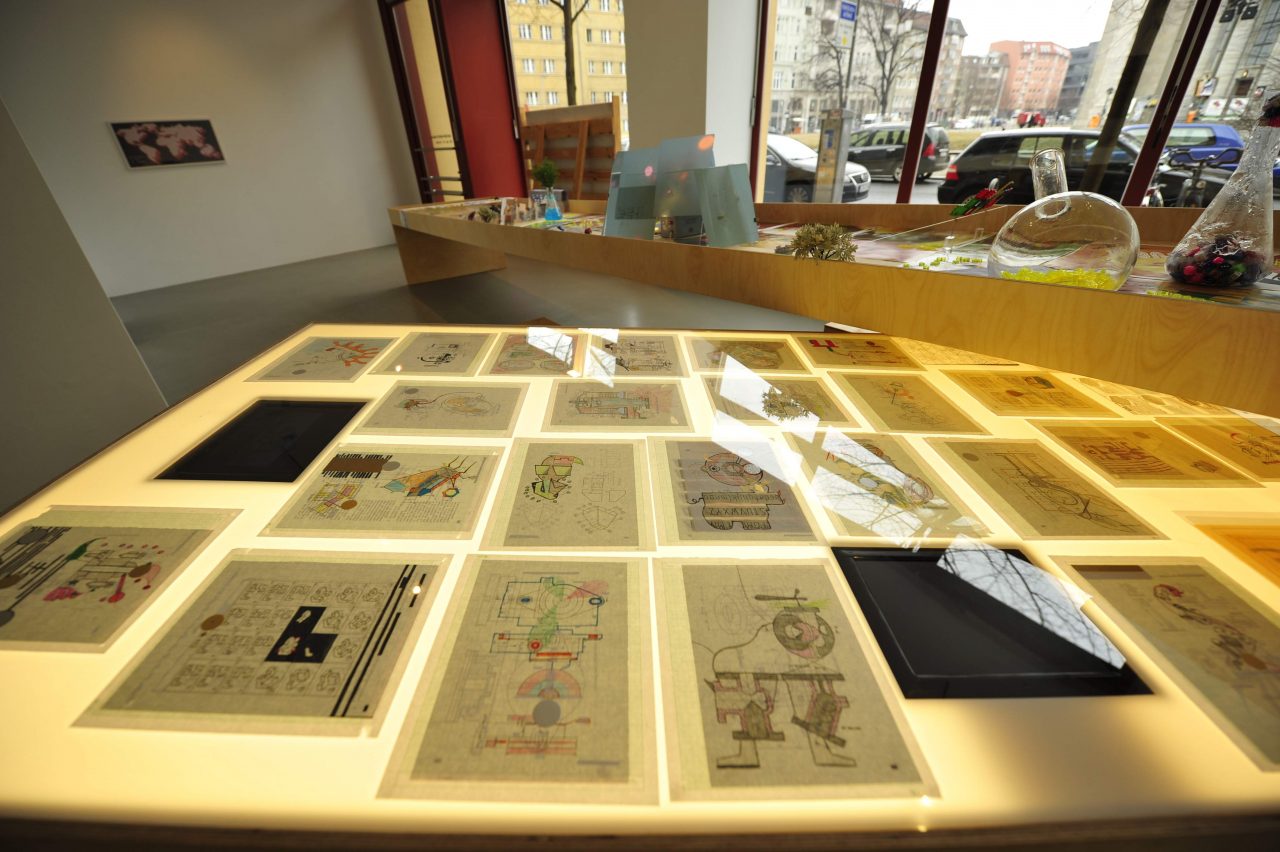Reverse Engineering the Euphoria Machine
Installation with furniture, 2 videos, objects, drawings, photographs
Mori Museum, Tokyo (2008-09); National Museum of Contemporary Art, Seoul (2009); Essl Museum, Vienna (2009); Gallery Nature Morte, Berlin (2012)
Euphoria Machine is the name we give to the apparatus of desire and cognition that seeks to create a consensus within society for boundless energy and wealth, and effaces all doubts and dissent about the ways in which this energy and wealth must be acquired. The material that fuels the Euphoria Machine is desire, more specifically it is a particularly frenetic form of the quest for energy, happiness and satisfaction that overrides all other considerations.
Sometime after the second World War, Edward Louis Bernays, a nephew of Sigmund Freud, a key strategist of war-time propaganda campaigns and the intellectual god-father of the advertising and public relations industry, applied a key discovery he had made during the fashioning of war propaganda to the future success of Capitalism. The discovery was this – in no other war in Human History, had wars been fought in the name of democracy, peace and prosperity. They had been fought for land, for the expansion of a particular dynasty or ruling groups power, for religious zeal and for other concretely political purposes. The propaganda campaigns of the Second World War however, successfully named a different kind of motivation for war – the desire for happiness, peace, prosperity and liberty. The identification of common virtues with the war machine proved to be a very successful motivator.
Once the war ended, Bernays realized that the same process could be replicated in ‘peacetime’ only this time, people must be made to realize that contributing their labour to capital, or buying goods that they did not necessarily need (in order to keep the machine of capital running) could also be done by identifying these acts with basic human drives for beauty, health, happiness, love, joy and contentment. So, people were told that they could feel a profound happiness, if they bought a shoe, or went to work in a call centre. This was a subtle but significant shift, in that it divorced a good from its function. A shoe, for instance was no longer something that covered and protected your feet, instead, it became a key to your personal well being. A job was no longer something you did to earn a living, it became a mark of your special identity as a human being. The building blocks of Capital were internalized as personal drives.
To us, this marriage between deep seated internal drives and the running of the vast impersonal network of a global economy is the secret of the ‘Euphoria Machine’. It is also the material that fuels the machine. The extraction of this material both requires as well as results in the subordination of the complexity of human life-experiences to the needs of capital.
It is a short distance from desiring a thing for the feeling we are told its possession will induce to acquiring stakes in things that do not yet exist simply because we are told that the calculus of prosperity depends on the acquisition and transaction of virtual assets. The current financial crisis emerges from a drive to acquire and transact things that are notional rather than real. Thus we have notional assets, notional debts underwritten by some very real transaction costs involved in the transfer and exchange of notional assets and debts. It is when the real costs overwhelm notional returns that we experience the opposite of euphoria. Currently, the euphoria machine’s exhaust only produces despair. This apparatus – the Euphoria Machine – takes (for us) the form of a ‘demonstration table’ that works as a diagram for a conceptual engine of the desire for perpetual energy and limitless economic growth.
The current hype around the so-called ‘Indian’ economy, both within India, and elsewhere in the world, (despite the easy gestures towards ‘doomsday’ in the global economy) is an instance of the working of the Euphoria Machine. At earlier times, the excitement around the post-war economic boom in Japan, or the rise of the ‘Asian Tiger’ economies in the Nineteen Eighties, or the current mania around the Chinese economy, (as well as earlier ‘boom’ periods in transatlantic and western European economies are all instances of the ‘Euphoria Machine’ at work).
The key product of the Euphoria Machine is processed perception. The perception that all ‘growth’ is wonderful, that happiness can be indexed by GDP, that there is such a thing as an ‘Indian’ Economy, and that this thing known as the ‘Indian Economy’ is booming. Even the idea that there is such a thing known as ‘Indian’ Art, and that ‘Indian’ Art, a small but symbolically significant cog in the machine of the Indian Market in niche high value goods is booming. All these are products, and by-products of the working of the Euphoria Machine.
The iteration of this project at Nature Morte Berlin takes the form of the processual elaboration of the ‘reverse engineering’ of the Euphoria Machine at work. We start with the assumption that we know the machine exists. The project’s intent is not to show how it works, but to lay bare its rhetorical components. Its proofs are all around us, in plans, projections, advertisements, policy statements, blueprints, balance sheets and reports.
Instead, the project aims to analyse its constituent parts, their operations and their interconnections in such a manner as to show how the ‘fuel’ (human drives and desires) is combusted and how that energy runs the moving parts of the machine so as to achieve the desired end.


